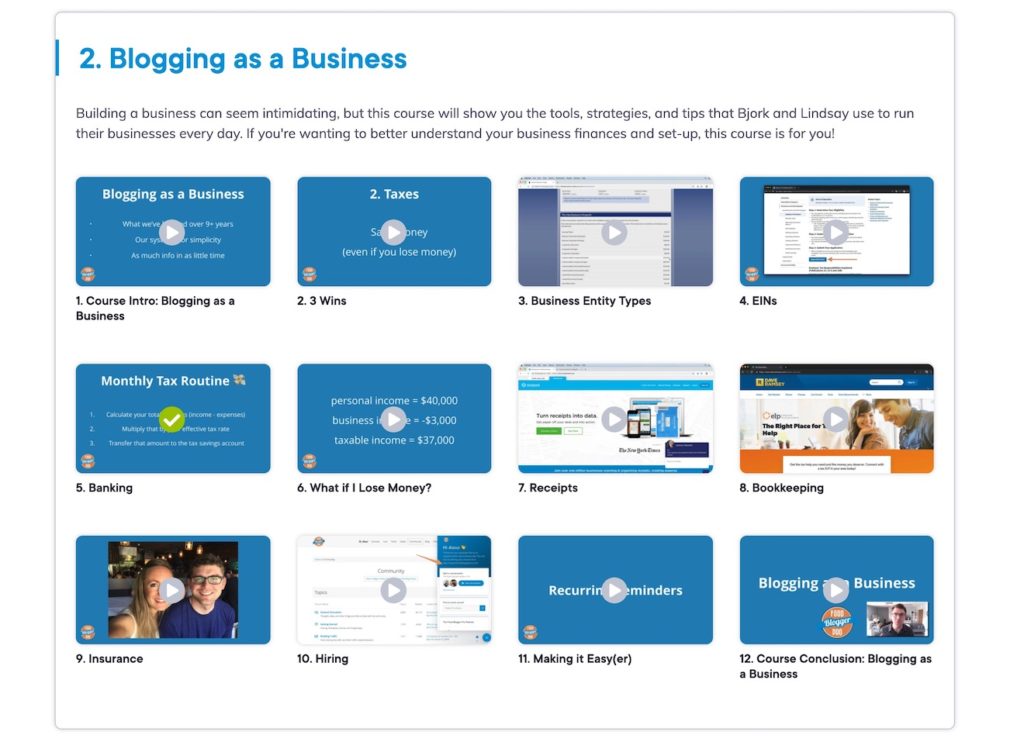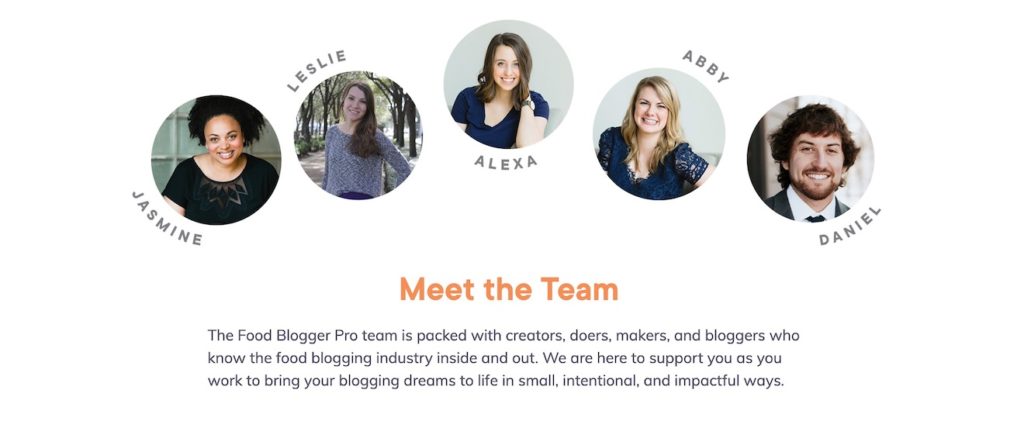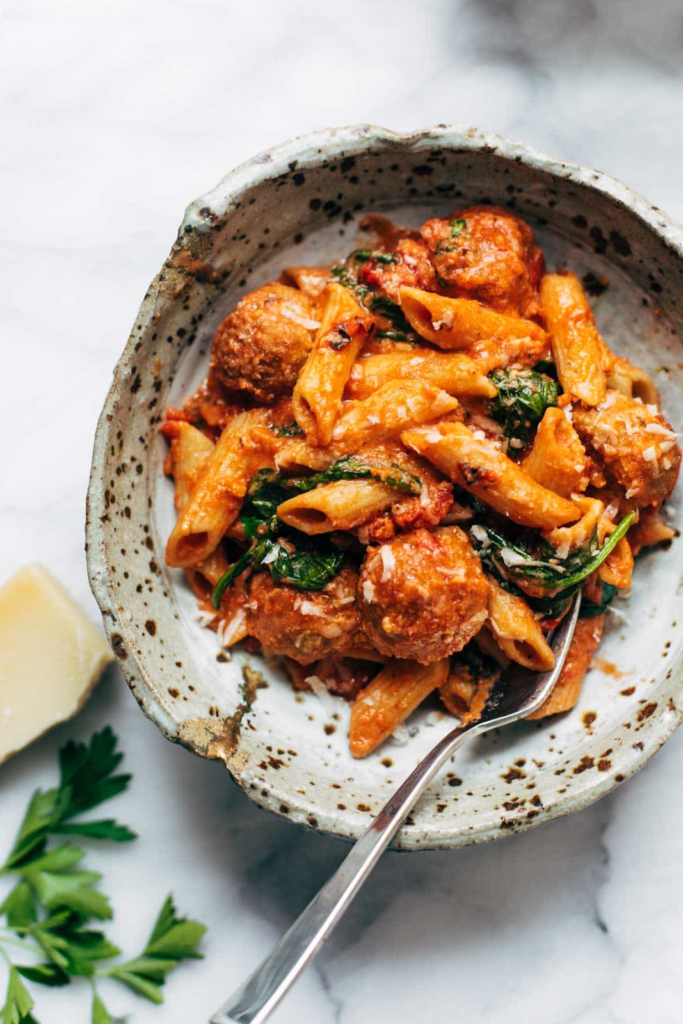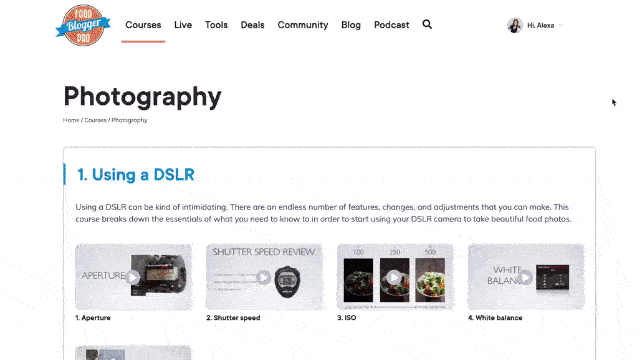If you’ve started your blog from scratch, you’re a CEO. Did you know that?
It’s one of those things that’s kind of obvious, but we don’t think about it much because it’s… intimidating? Scary? Official? All of the above?
But it’s true. And you’ve probably spent countless hours, days, weekends, and years DIYing it all, creating content, photographing recipes, searching for keywords, responding to comments, and sharing your recipes on social media.
And if you’re making money, working with sponsors, running ads, selling products, and/or joining affiliate programs, your blog is a business.
So let me ask you this: are you treating it that way?
To achieve serious blog growth (both in traffic and in income), you should be.

If you want to grow your blog into a full-fledged money-making business that you’re relying on for some or all of your income, there are some things you should start considering today in order to pave the way for long-term success down the road:
1. Understand the basics of running a business (or hire someone to run it for you)
If you’ve built your blog from scratch, it can be quite the transition from “hobby blog” to “full-blown biz.”
Businesses need to answer to the government. They need to pay taxes, they have expenses, and they need to have an identification number. There will be contracts to review, forms to complete, and important decisions to be made.
As your blog’s CEO, you should have a basic understanding of how businesses work in your country and what businesses need to do in order to be in “good standing” with the government.
If you don’t have a ton of experience running a business, it can feel a little intimidating. Okay, maybe a lot intimidating. 🤪
But it’s a necessary step if your business is going to grow.
There are three big business wins that you can tackle right now:
- Making sure that YOU are not your business –– This means that you should establish your blog as a business and make sure that you are not personally liable if something goes wrong.
- Figure out how your business is paying taxes –– Your business income most likely won’t have taxes withheld, so you’ll need to pay taxes somehow. You can set aside a portion of your income for taxes at the end of each year or pay them on a quarterly basis. (More on managing your money as a pro blogger can be found here)
- Understand what’s coming in and going out –– Have a system in-place for keeping track of your income and your expenses. It could be as simple as a spreadsheet (using something like Google Sheets or Microsoft Excel) or a little more robust with a tool like QuickBooks.
If you want to learn more about these topics, we have a whole course covering the business of blogging in our Food Blogger Pro membership. You can also peruse episodes of The Food Blogger Pro Podcast, as we’re always talking about building and growing businesses online.

2. It’s okay to give up control to a team.
It can feel really daunting to give control of some parts of your business over to someone else. But it can also be freeing.
There are things you probably want to be doing that you just don’t have the time for. And there are most likely things that you’re currently doing that you don’t personally need to be doing. That’s where a teammate (or two, or more) can help. 😊
Teammates can also help remove the pressure of having to run a business all by yourself, and they can be a really awesome support system for you when things get tough. I know about that first-hand; our Food Blogger Pro team is small, yet mighty!

You can hire employees or contractors, and there are really important differences between the two.
In the US, an employee would receive benefits and a W-2 at the end of each year. A contractor would receive a 1099 at the end of the year (if they make more than $600 in a year).
If you’re in the US and want to dive deeper into this topic, we recommend checking out this resource on the IRS website or this episode of The Food Blogger Pro Podcast.
If you’re not based in the US, definitely do some Googling to see how employees and contractors differ in your country.
We have both employees and contractors working for Food Blogger Pro, Pinch of Yum, and the other businesses we run.
3. CEOs decide when to invest back into their businesses
As CEO, you get to decide how and when to invest in your business. As the saying goes, “You need to spend money to make money.”
The Pinch of Yum team has invested in a lot of resources to help their business grow. In addition to investing in a team, an office, and gear like cameras and tripods, they’ve also invested in learning so they can do what they do even better.
For example, when Lindsay started Pinch of Yum, she wasn’t the skilled photographer you probably know her as now. In fact, here’s an example from one of the earliest recipe posts on Pinch of Yum:

Because we eat with our eyes, and because she actually enjoyed the process of photographing food, Lindsay decided to invest in herself. She took photography courses, spent time experimenting and redoing, and learned what it took to take a truly beautiful photo.
Not only did her photography get better, leading to more traffic and sponsored opportunities…

…she was able to write and sell an ebook based off of the knowledge she gained and applied to food photography…

…AND she was able to instruct other food bloggers who want to level-up their food photography game on Food Blogger Pro!

Because Lindsay decided to invest in her skills as a photographer, she was able to monetize and grow her blog through that skill.
So ask yourself: which of your skills can you invest in? How can you get a tiny bit better by investing in those skills and, in turn, help your blog grow, get in front of more readers, and make more money?
——————–
Your role as your blog’s CEO means you have a lot of responsibilities. But if you tighten up the essentials, think about offloading some of your work to others, and figure out how you can invest in your business and in yourself, you can confidently step into and thrive in this role.
Let’s chat in the comments 👇: What are some of the things that have made you feel more confident as CEO of your own blog?
Hey guys!
I’ve come back to this article several times now; it’s thoughtful without being overwhelming.
I’m curious if someone can let me know what differences I could expect between Lindsey’s e-book and the photography courses that are available with a FBP membership?
Hi Sarah! Thanks for the feedback – so glad you found the post useful! The photography courses available through an FBP membership are way more detailed and encompassing. Lindsay teaches the courses, and you’ll get a lot more from them over the ebook.